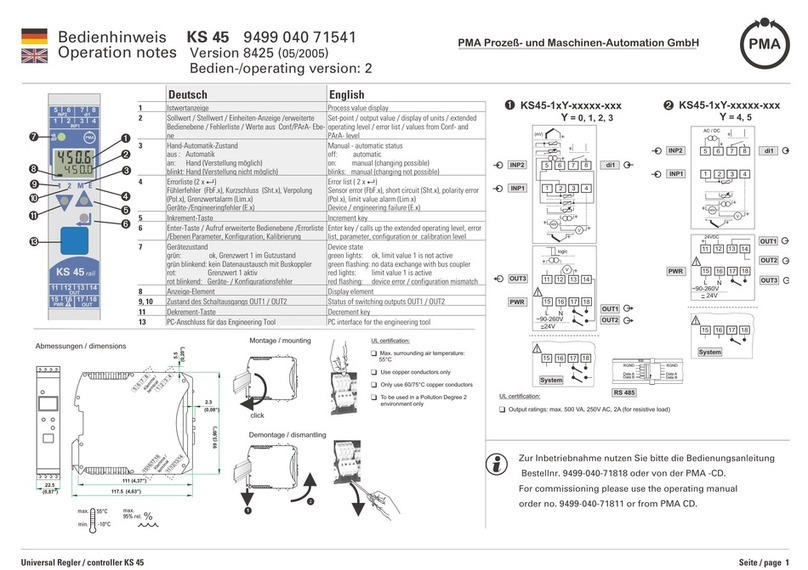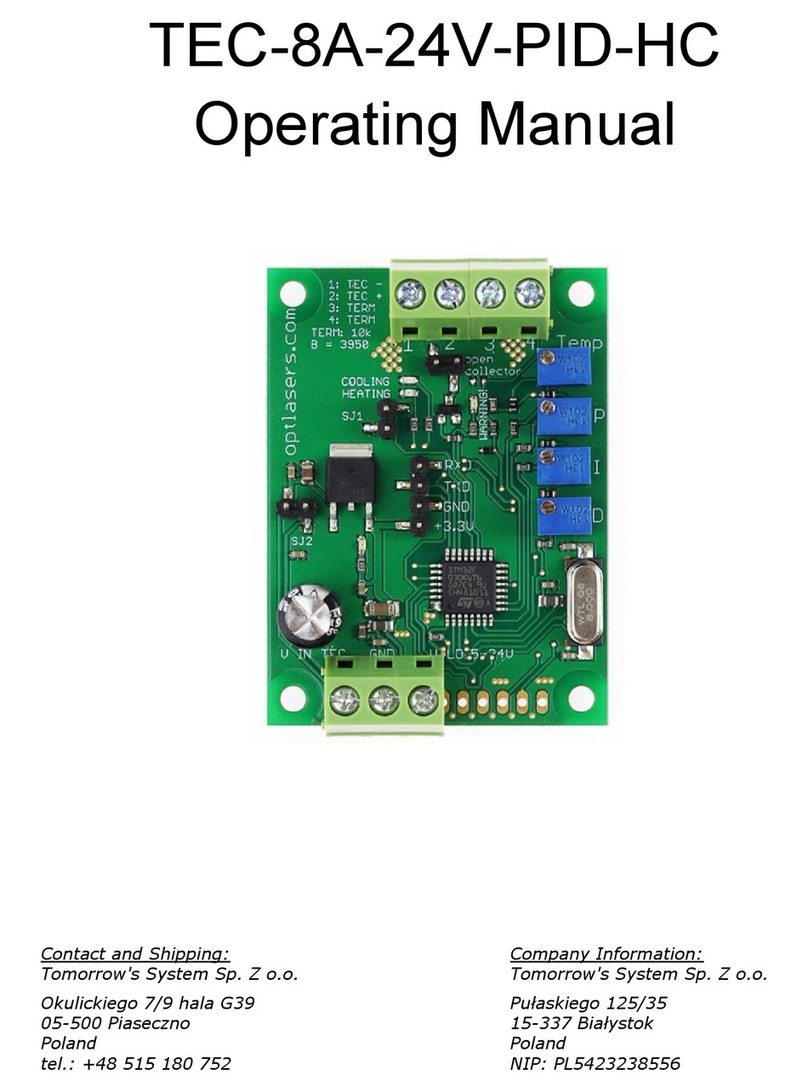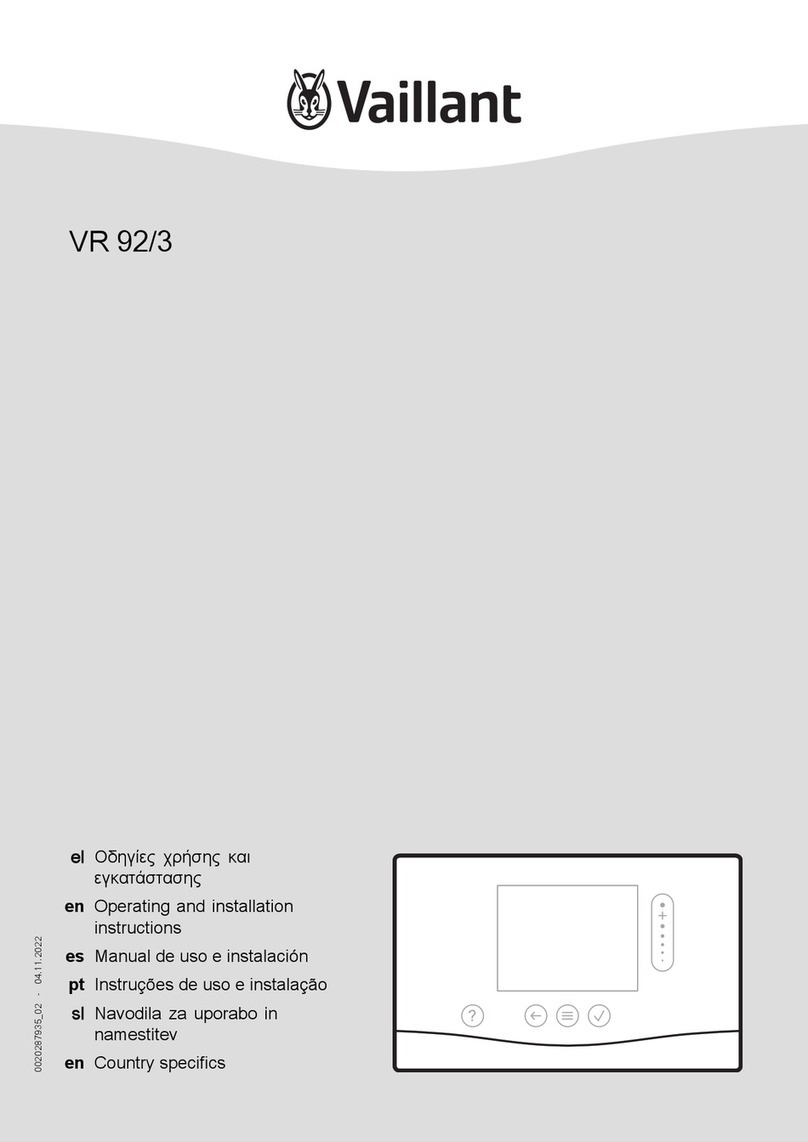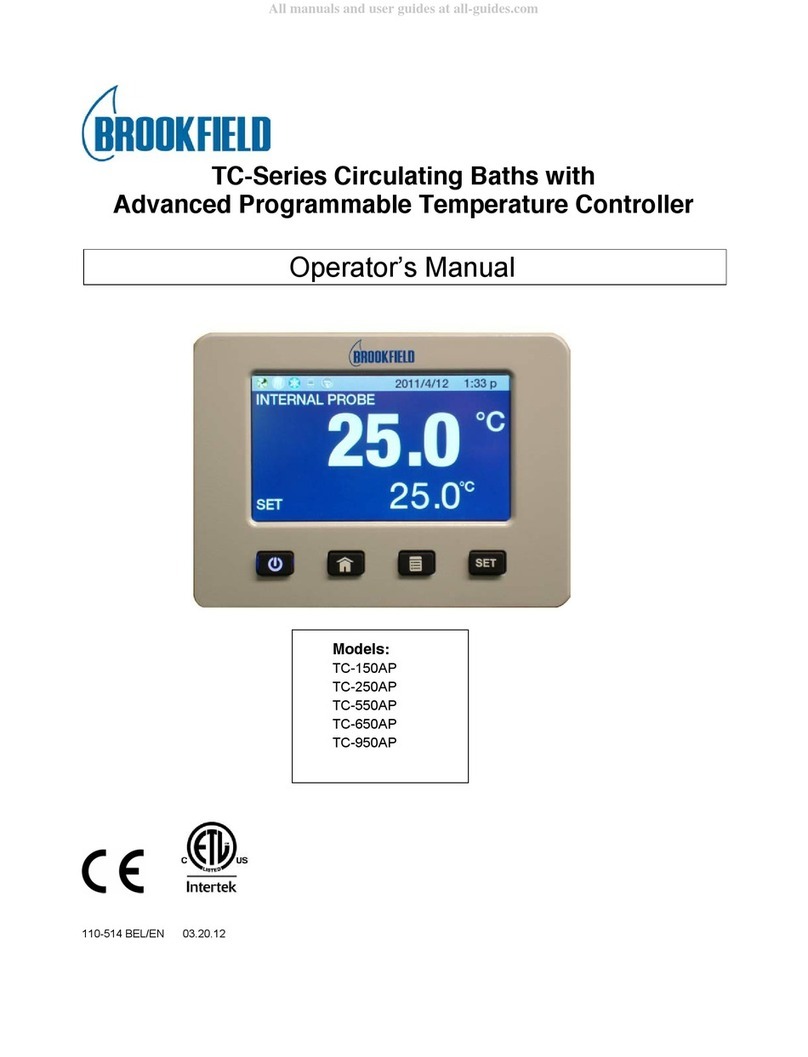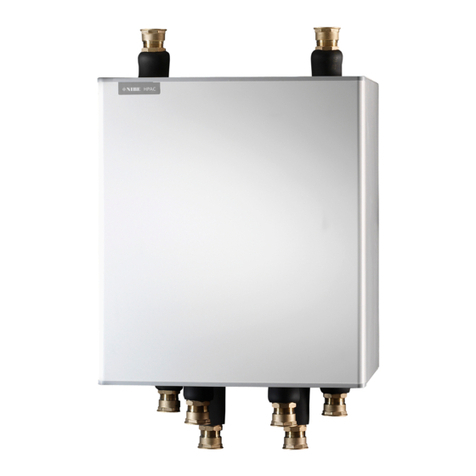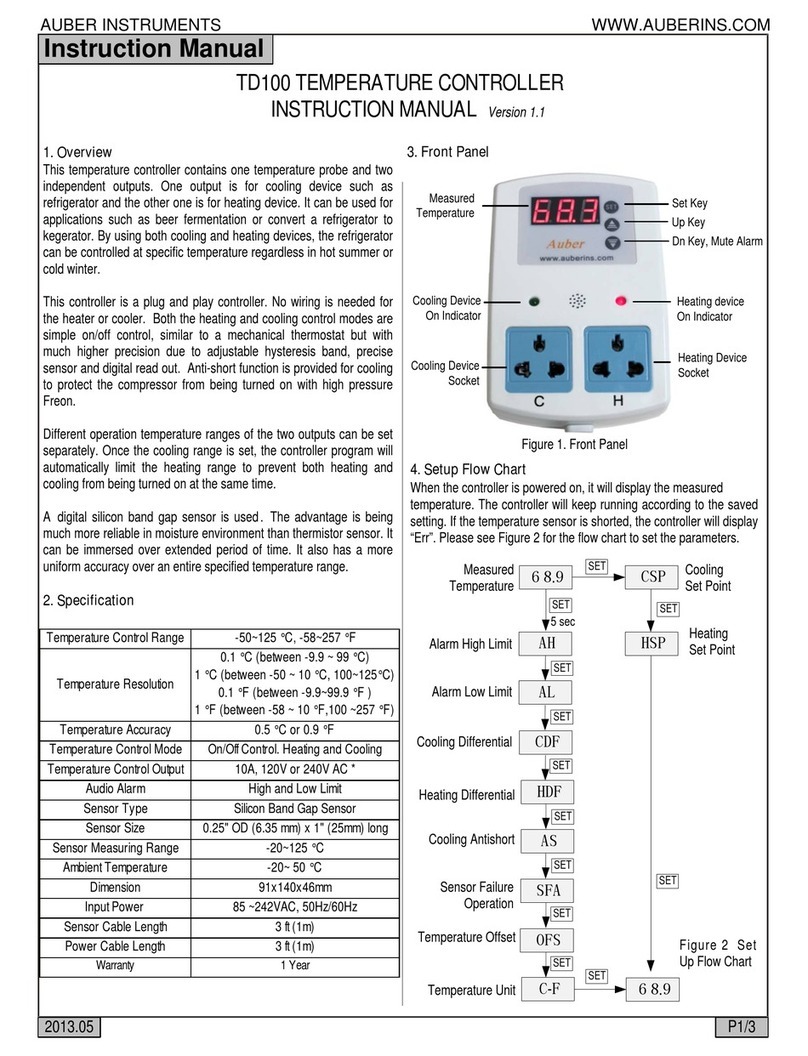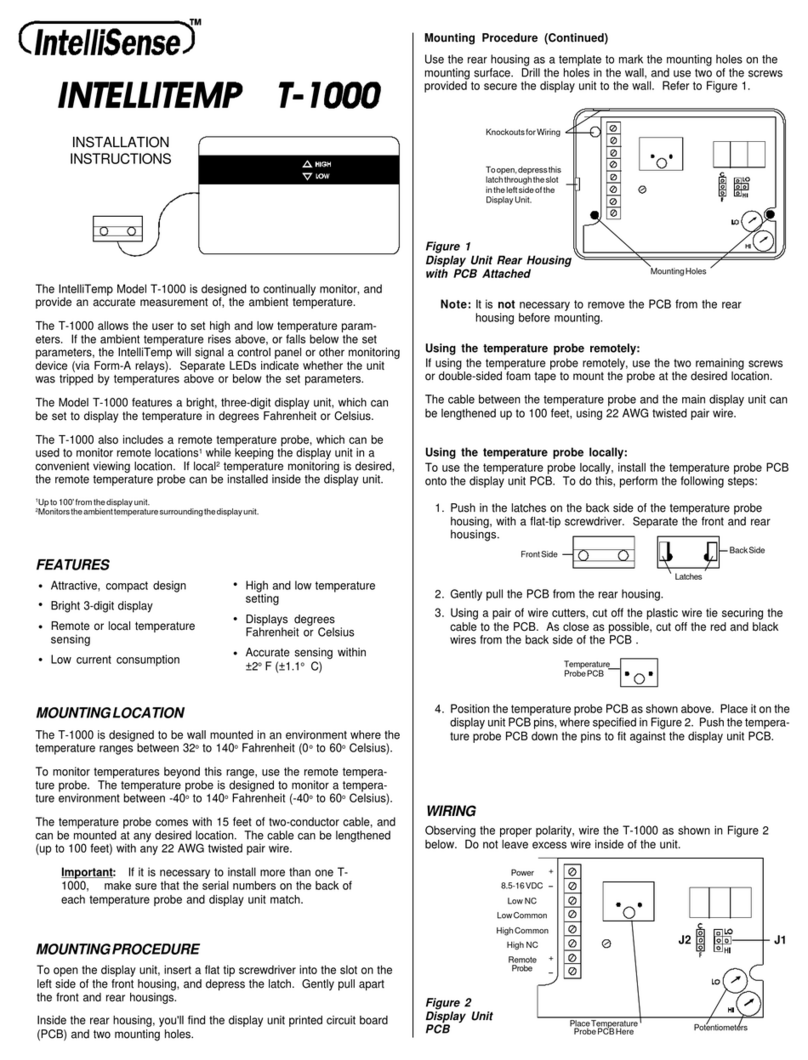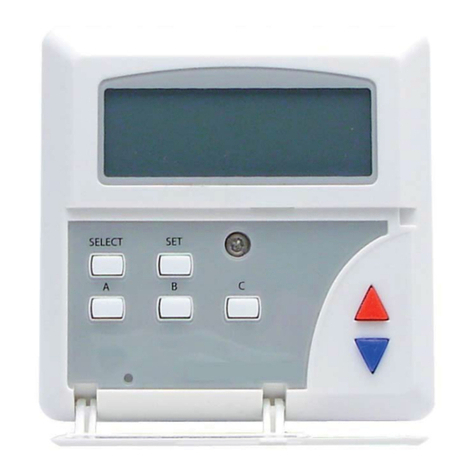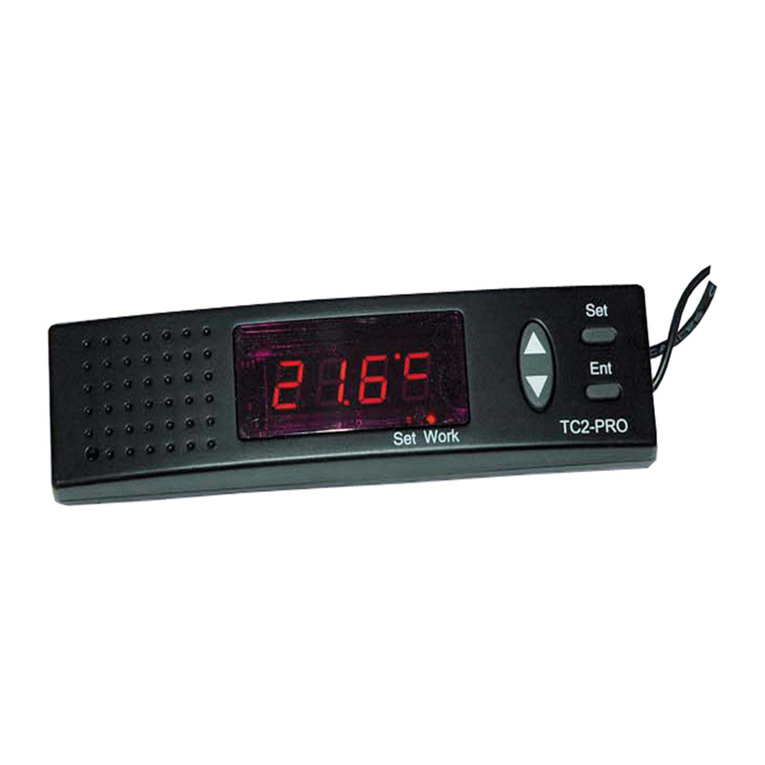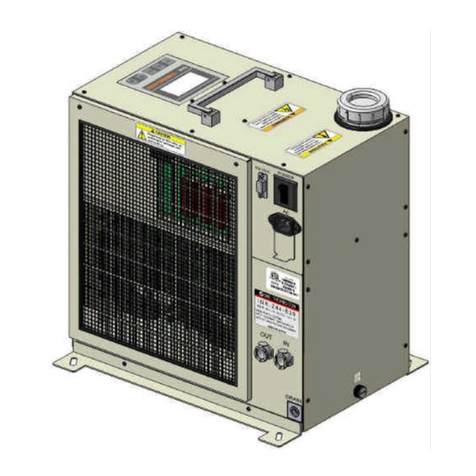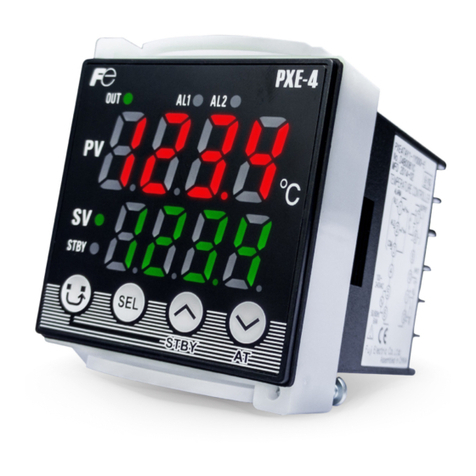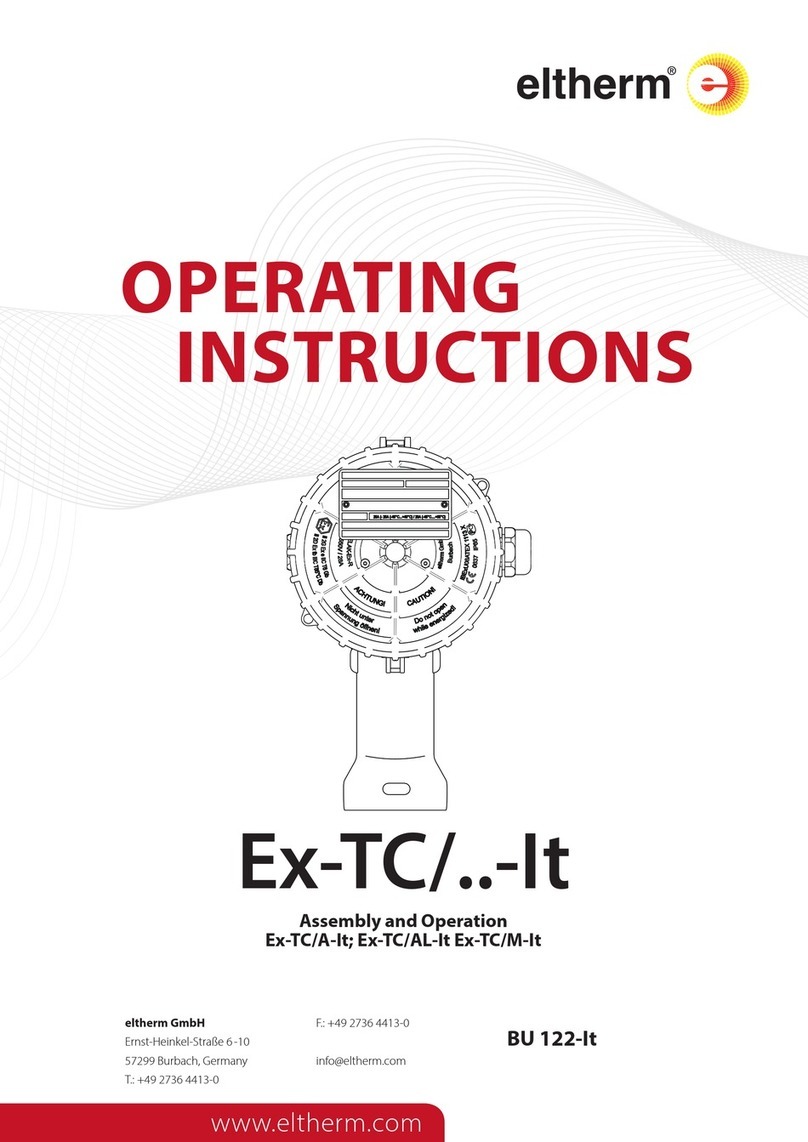7
1.2.2 PID Control with Autotuning
When an iB6 or iB12 zone is in Normal (closed loop) mode, Proportional-Integral-Derivative (PID)
control is provided. The iB6 and iB12 Temperature Controllers also support Manual (open loop)
mode that overrides automatic control. In Manual mode you control the output by entering a fixed
output percentage value.1A zones transfer from PID to manual is “bumpless” when the process
value is within 5 °C (9 °F) of the setpoint.
Using PID control, the controller modulates output power by adjusting the output power
percentage within a configurable proportional band. Power is proportionally reduced as the
process temperature gets closer to the setpoint temperature.
The configurable derivative action affects the output based on the rate of change of the process
value.
The integral action affects the output based on the duration of the process value’s variation from
the setpoint. In the iB6 and iB12 Temperature Controllers, the integral (reset) action is always
equal to six times the configured derivative (rate) action.
An Autotune function is standard on every iB6 and iB12 Temperature Controller. This feature
for easy tuning of the proportional and derivative, components of the control algorithm can be
initiated every time the controller is powered up, once when the controller is set up regardless
of success (and again by changing a parameter value), once only if successful (repeated at each
power up until successful), or never.
Instructions for tuning the controller automatically and manually are in Section 6.
1.2.3 CompuStep®Soft Start for Heater Bake Out
All iB6 and iB12 Temperature Controllers support the CompuStep®soft start feature, which
allows slow dissipation of moisture in heaters by gradually applying power to the heaters. Using
this feature helps extend the life of the heaters and the moulds. When a soft start is executed,
single cycle bursts start at 5% output power and step up the output 5% every 30 seconds.
• The soft start when the controller is in Normal (closed loop) mode lasts five minutes or until
the process temperature reaches 93 °C (200 °F).
• The soft start when the controller is in Manual (open loop) mode continues until the output is
the lower of 50% or the target Manual mode output percent.
By default, a soft start will be executed:
• Every time the controller starts (after being taken out of Idle) and the process value is less
than 93 °C (200 °F), and
• Every time the controller is returned to Normal (automatic) operation and the PV is less than
93°C (200 °F).
1.0 Introduction
1Use of a fixed output percentage is also possible under other circumstances. Configuration parameters let you specify a fixed
output to be used as a failsafe action, a different fixed output percentage to be used in standby mode, and another fixed output
percentage used during the boost function described in 1.2.4.



